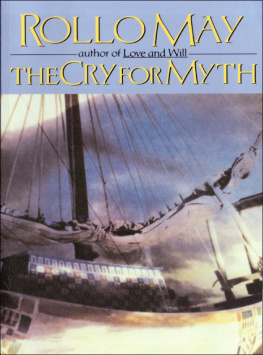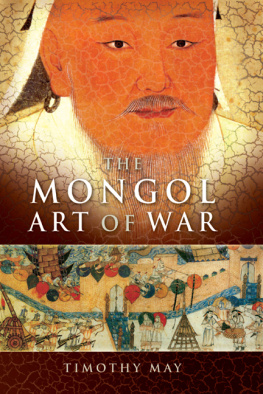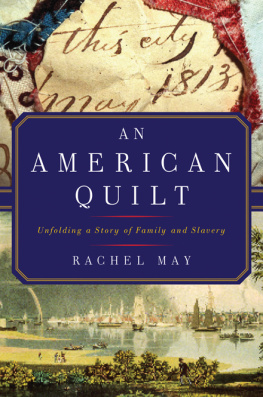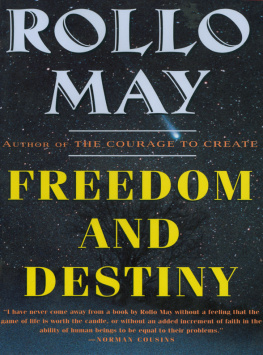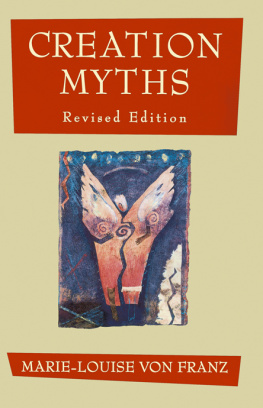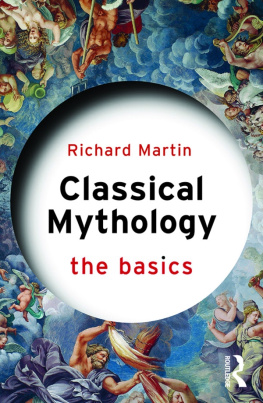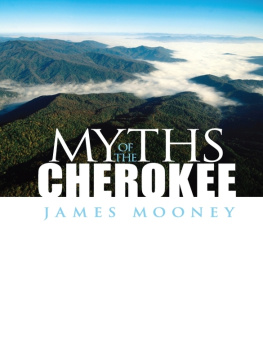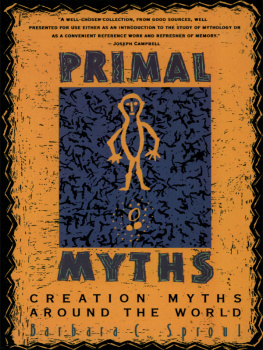May - The Cry for Myth
Here you can read online May - The Cry for Myth full text of the book (entire story) in english for free. Download pdf and epub, get meaning, cover and reviews about this ebook. City: New York;N.Y;London, year: 2011;2013, publisher: W. W. Norton & Company, genre: Science. Description of the work, (preface) as well as reviews are available. Best literature library LitArk.com created for fans of good reading and offers a wide selection of genres:
Romance novel
Science fiction
Adventure
Detective
Science
History
Home and family
Prose
Art
Politics
Computer
Non-fiction
Religion
Business
Children
Humor
Choose a favorite category and find really read worthwhile books. Enjoy immersion in the world of imagination, feel the emotions of the characters or learn something new for yourself, make an fascinating discovery.
The Cry for Myth: summary, description and annotation
We offer to read an annotation, description, summary or preface (depends on what the author of the book "The Cry for Myth" wrote himself). If you haven't found the necessary information about the book — write in the comments, we will try to find it.
Here are case studies in which myths have helped Dr. Mays patients make sense out of an often senseless world.Rollo May, respected therapist and bestselling author of Love and Will, discusses the relationships between myths and the subconscious, showing how myths can provide meaning and structure for those who seek direction in a confused world.
May: author's other books
Who wrote The Cry for Myth? Find out the surname, the name of the author of the book and a list of all author's works by series.
The Cry for Myth — read online for free the complete book (whole text) full work
Below is the text of the book, divided by pages. System saving the place of the last page read, allows you to conveniently read the book "The Cry for Myth" online for free, without having to search again every time where you left off. Put a bookmark, and you can go to the page where you finished reading at any time.
Font size:
Interval:
Bookmark:

Copyright 1991 by Rollo May
All rights reserved.
First Edition
Library of Congress Cataloging-in-Publication Data
May, R0ll0.
The cry for myth / Rollo May.
p. cm.
1. MythologyTherapeutic use. 2. Psychotherapy. I. Title.
RC489.M96M39 1991
616.89 14dc20 90-30451
ISBN 978-0-393-24077-1 (e-book)
W.W. Norton & Company, Inc.
500 Fifth Avenue, New York, N.Y. 1O110
W.W. Norton & Company, Ltd.
10 Coptic Street, London WC1 A 1PU
A s A PRACTICING PSYCHOANALYST I find that contemporary therapy is almost entirely concerned, when all is surveyed, with the problems of the individuals search for myths. The fact that Western society has all but lost its myths was the main reason for the birth and development of psychoanalysis in the first place. Freud and the divergent therapists made it clear that myths are the essential language in psychoanalysis.
The great interest in Joseph Campbells television talks on myth is the most obvious demonstration of the profound need throughout Western countries for myth. But whereas Campbells talks were almost exclusively about myths in India, Asia, China, and Asia Minor, this book is about myths as they are immediately present in the consciousness and unconsciousness of contemporary living people in the West.
We are concerned here with narratives which come up continuously in contemporary psychotherapy.
I speak of the Cry for myths because I believe there is an urgency in the need for myth in our day. Many of the problems of our society, including cults and drug addiction, can be traced to the lack of myths which will give us as individuals the inner security we need in order to live adequately in our day. The sharp increase in suicide among young people and the surprising increase in depression among people of all ages are due, as I show in this book, to the confusion and the unavailability of adequate myths in modern society. This book will appeal, I hope, to people in America and similar countries as part of our endeavor to bring the problem of myths into open consciousness and to show how myths can be rediscovered as tools for understanding ourselves.
This is especially urgent as we seek to give meaning to our livesin our creativity, our loves, our challengessince we stand on the threshold of a new century. The approach of a new period in history stimulates us to take stock of our past and to ask the question of the meaning we have made and are making in our lives. It is in that mood that I offer this book.
Rollo May
Here we have our present age bent on the extermination of myth. Man today, stripped of myth, stands famished among all his pasts and must dig frantically for roots, be it among the most remote antiquities.
Friedrich Nietzsche,
The Birth of Tragedy from
the Spirit of Music
It may perhaps seem to you as though our theories are a kind of mythology. But does not every science come in the end to a kind of mythology like this? Cannot the same be said today of your own Physics?
Freud, in his correspondence
with Einstein
We hear the cry for myth, sometimes a silent cry, on the campuses of our day. Science and Humanism must join together to respond to this cry.
Matthew Bronson, biologist,
at a student conference at
the University of California, San Diego
By the same author
LOVE AND WILL
THE MEANING OF ANXIETY
MANS SEARCH FOR HIMSELF
POWER AND INNOCENCE
THE COURAGE TO CREATE
PSYCHOLOGY AND THE HUMAN DILEMMA
FREEDOM AND DESTINY
THE DISCOVERY OF BEING


Studied alive, myth is not an explanation in satisfaction of a scientific interest, but a narrative resurrection of a primeval reality, told in satisfaction of deep religious wants, moral cravings.
Bronislaw Malinowski,
Magic, Science and Religion
A MYTH IS A WAY of making sense in a senseless world. Myths are narrative patterns that give significance to our existence. Whether the meaning of existence is only what we put into life by our own individual fortitude, as Sartre would hold, or whether there is a meaning we need to discover, as Kierkegaard would state, the result is the same: myths are our way of finding this meaning and significance. Myths are like the beams in a house: not exposed to outside view, they are the structure which holds the house together so people can live in it.
Myth making is essential in gaining mental health, and the compassionate therapist will not discourage it. Indeed, the very birth and proliferation of psychotherapy in our contemporary age were called forth by the disintegration of our myths.
Through its myths a healthy society gives its members relief from neurotic guilt and excessive anxiety. In ancient Greece, for example, when the myths were vital and strong, individuals in the society were able to meet the problems of existence without overwhelming anxiety or guilt feeling. Hence we find the philosophers in those times discussing beauty, truth, goodness, and courage as values in human life. The myths freed Plato and Aeschylus and Sophocles to create their great philosophic and literary works, which come down as treasures for us today.
But when the myths of classical Greece broke down, as they did in the third and second centuries, Lucretius could see aching hearts in every home, racked incessantly by pangs the mind was powerless to assuage and forced to vent themselves in recalcitrant repining.
We in the twentieth century are in a similar situation of aching hearts and repining. Our myths no longer serve their function of making sense of existence, the citizens of our day are left without direction or purpose in life, and people are at a loss to control their anxiety and excessive guilt feeling. People then flock to psychotherapists or their substitutes, or drugs or cults, to get help in holding themselves together. Hence the psychologist Jerome Bruner can write, For when the prevailing myths fail to fit the varieties of mans plight, frustration expresses itself first in mythoclasm and then in the lonely search for internal identity.
This lonely search for internal identity is a widespread need which gives rise in our society to the development of psychoanalysis and the many forms and promises of psychotherapy and the multitude of cure-alls and cults, constructive or destructive as they may be.
This autobiographical novel, I Never Promised You a Rose Garden, tells the experience of a young schizophrenic woman, Deborah, in her actual treatment with a psychiatrist. The stirring events in the treatment of this girl read like a contemporary extraterrestrial film. In her therapy we see a constant and gripping interplay of myths. Deborah (as she is called) lived with the mythic figures of Idat, Yr, Anterrabae, Lactamaen, the Collect, all of whom inhabited the Kingdom of Yr. Since Deborah could communicate with no one else in the world, she desperately needed these mythic figures. She writes, the gods of Yr had been companionssecret, precisely sharers of her loneliness. She would flee to them when she was terrified or unbearably lonely in the so-called real world.
On the way to the sanatorium, as Deborah tells us, she and her parents stayed overnight in adjacent rooms in a motel.
On the other side of the wall, Deborah stretched to sleep. The kingdom of Yr had a kind of neutral place which was called the Fourth Level. It was achieved only by accident and could not be reached by formula or an act of will. At the Fourth Level there was no emotion to endure, no past or future to grind against.
Font size:
Interval:
Bookmark:
Similar books «The Cry for Myth»
Look at similar books to The Cry for Myth. We have selected literature similar in name and meaning in the hope of providing readers with more options to find new, interesting, not yet read works.
Discussion, reviews of the book The Cry for Myth and just readers' own opinions. Leave your comments, write what you think about the work, its meaning or the main characters. Specify what exactly you liked and what you didn't like, and why you think so.

